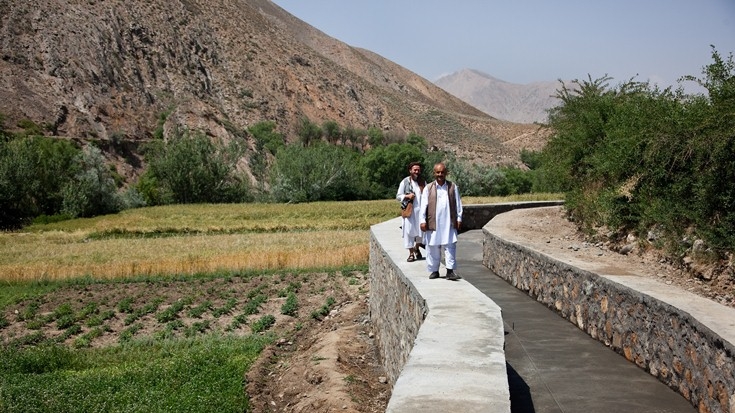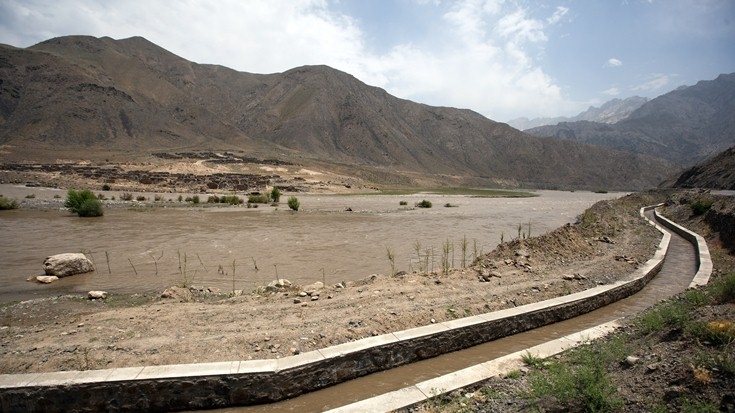UNABA DISTRICT, Panjshir Province – On a stretch of land beside the Panjshir River, two villages work with a single purpose. Together, villagers dig trenches, haul rocks, pour concrete, and carefully shape a narrow irrigation canal that will soon wind about 750 meters between the two Afghan communities, bringing water to fields tended by about 1,300 families.
From each village, of Unaba and Deh Meina in the Unaba district of Panjshir province, farmers have given up valuable riverside plots so that they and their neighbors can all benefit from the new irrigation project called Dhamm Canal. The improved water supply will mean farmers should be able to double production from their fields of wheat, corn, fruit, and other crops, says Alimi, community development council (CDC).
Deh Meina’s council of 10 men and 10 women was created in 2012 under the auspices of the Ministry of Rural Rehabilitation and Development’s National Solidarity Project (NSP). Supported by the World Bank and Afghanistan Reconstruction Trust Fund (ARTF), the NSP mobilizes communities to run transparent elections and create CDCs, much like traditional Afghan shuras (councils). It is now estimated about 22,490 CDCs representing some 35,200 villages have been created under the NSP.
Once established, CDCs are eligible to apply for funding for a range of infrastructure and service projects, including access to power, roads, drinking and irrigation water, improved sanitation, bridges, and schools.
In the villages of Deh Meina and Unaba, the CDCs both voted for an irrigation canal, then approached each other with the idea of a joint project, says Mohammad, an engineer. The two communities sit next to each other on the Panjshir River. The new canal first crosses Deh Meina property and ends at Unaba.
The two communities each received about $60,000 funding for construction of their half of the canal. Every household also contributed about AFN400, says Ranjbar. “We all recognized that our first priority should be irrigation because when our level of income goes higher, then we can all have a better future,” says Ranjbar, who works in a government office to supplement his farm income and support three children.
“We will no longer have to tell our sons and daughters to work with us, but we can send them to school,” agrees Alimi, who has 10 children. “And people in our villages will also stop fighting with each other.”


